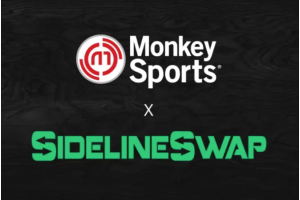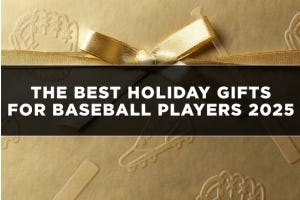How to Choose the Right Slowpitch Softball Bat

Slowpitch softball bats are not a “one-size-fits-all” product, as there are different materials, weight distributions, and other aspects that make slowpitch bats vary. In order to take the uncertainty out of your slowpitch shopping experience, we have broken it down for you. To find your perfect slowpitch softball bat, let's look at the different weights, sizes, materials, designs, and leagues to help you find a bat tailored to your game.
This article will cover:
Choosing the right slowpitch softball bat can be difficult, but the most important factors when selecting a bat is finding the proper bat size, certifications, and weight distribution for you.
- Length of the bat
- Weight of the bat
- Weight distribution of the bat
- Leagues
- Bat certifications
- Bat materials
Choosing the Slowpitch Softball Bat Length
One thing to be mindful of when choosing your bat is recognizing that all slowpitch softball bats are 34in. long. The length of bats is to provide the player with more plate coverage and although slowpitch bats are all 34in., this length is the maximum length for all baseball and fastpitch bats. Thus, the player will not sacrifice plate coverage with any slowpitch softball bat.
Choosing the Right Slowpitch Softball Bat Weight (and Drop)
When deciding between a heavier or lighter bat in slowpitch softball, the player must decipher what type of hitter they are. Some players want a lighter bat to create higher swing speeds and hit line drives, while players who want heavier bats are looking to drive the ball in the gaps and over the fence. Whatever the case is, we’ve got you covered here!
With all bats at 34in. in length, the difference between bats will just be the weight. Dependent on your size, these bats should be lighter if you are smaller or larger they will be heavier.
| PLAYER SIZE | |||
|---|---|---|---|
| XS | 34in./25oz. | 34in./25oz. | 34in./26oz. |
| SMALL | 34in./25oz. | 34in./26oz. | 34in./26oz. |
| MEDIUM | 34in./26oz. | 34in./27oz. | 34in./27oz. |
| LARGE | 34in./27oz. | 34in./28oz. | 34in./29oz. |
Although at a surface level slowpitch softball bats may all look the same, there are different types of slowpitch bats to consider. This can include whether the bat is balanced, end-loaded, double-walled, or single-walled.
Balanced Bats
Players who are looking to hit line drives and get on base consistently are best equipped with a balanced slowpitch bat. With 34in. in length and a balanced feel, players will generate more bat speed while also having more control of the bat head while swinging.
End-Loaded Bats
On the contrary, end-loaded slowpitch softball bats are designed for those looking to showcase their power by driving the ball in the gaps and over the fence. With an end-loaded feel to the bat, the player will help the player generate more momentum on each swing and allow for more power.
Double-Walled Bats
Double-wall bats are known for having more pop than single-wall bats. If the player makes solid contact and is able to flex both walls, double-wall bats will produce more power than single-wall bats. This is a great option for those who can consistently make solid contact and who are looking to showcase their power.
Single-Wall Bats
Single-wall bats, while still reliable, typically lack the amount of pop that’s featured in a double-wall bat. Single-wall bats are a great option for those who want a cheaper but still durable bat.
One-piece Bats
One-piece bats are great for generating more bat speed and they also provide the hitter with a stiffer bat. The stiffer bat allows for greater energy transfer from the player to the ball as the bat will not feature as much flex as its two-piece counterpart.
Two-piece Bats
Two-piece bats are a great option for those wanting more whip in their bat as the flex of the two-piece bat will act as more of a trampoline to generate higher bat speeds and power. Along with this, two-piece bats will also eliminate more vibration than the one-piece bat.
Although there are various bats to choose from, one thing to be mindful of when purchasing a slowpitch softball bat is understanding league rules and what bats the particular league allows. For example, USSSA bats can be used in USSSA leagues while USA/ASA Bats can be used in USA/ASA leagues. Let’s take a look at these bat certifications and what makes them different from one another.
Just like the different leagues stated above, there are also different bat certifications that pertain to each league. These bat certifications are put in place to help keep players safe by ensuring that slowpitch bats and their liveliness are kept at a reasonable level.
USSSA Bat Certification
In order to be USSSA certified, bats must have a Bat Performance Factor (BPF) of 1.20 or lower. This simply refers to the rebound of a ball off of a bat as compared to throwing a ball against a wall. Thus, a ball cannot rebound more than 20% faster off of a bat in order to reach the 1.20 BPF standard.
USA/ASA Bat Certification
The USA bat certification, also known as ASA, has two different standards and stamps that will be used on bats. The first certification stamp is an All Association stamp that says ASA 2004 and this stamp will typically be alongside the USSSA and NSA stamps as well. These bats will perform at a 98 MPH standard. The second certification stamp ASA bats may feature is an ASA only stamp. Bats with an ASA only stamp will perform at a 100 MPH standard.
NSA Bat Certification
NSA bat certifications will be very similar to that of a USSSA stamp as both will adhere to the 1.20 BPF standard. Just like USSSA bats, the NSA certification ensures that the ball will not rebound off of the bat at more than 20% faster than it is pitched.
SSUSA Bat Certification
SSUSA’s bat certification is for the Senior Softball USA league. These bats will have a slightly higher BPF at 1.21 as compared to the 1.20 BPF standard featured on USSSA and NSA bats. This means that SSUSA bats will not rebound 21% faster than it is pitched.
Slowpitch softball bats, while they make look the same at surface level, feature different bat materials such as composite, aluminum, or a combination of the two. In order to choose the right slowpitch bat, you must understand which material type matches your playing style and what feel you prefer as a hitter.
Composite Slowpitch Softball Bats
One of the main advantages of a composite slowpitch softball bat is a larger sweet spot that provides the hitter with a bigger hitting surface. Composite slowpitch bats will typically feature a two-piece construction and allow for more flex in the handle to create a whip-like action while swinging. A two-piece bat will also allow for reduced vibration as a connection point will separate the barrel from the handle.
Aluminum Slowpitch Softball Bats
Aluminum bats will feature a stiffer feel on swings as the one-piece bat will not flex as much as a composite two-piece bat. Aluminum slowpitch softball bats and their one-piece construction will provide a stiffer swinging bat which results in faster swing speeds and a better energy transfer from player to the ball. These bats will have a slightly smaller sweet spot than a composite bat and will have more vibration than their composite two-piece counterpart.
Wood Slowpitch Softball Bats
Wood slowpitch softball bats will be completely different compared to an aluminum or composite slowpitch bat. These bats will have smaller sweet spots and will require better hand-eye coordination in order to drive the ball consistently. Wood slowpitch bats are a great option for those looking to train and develop better hand-eye coordination.
Just like baseball and fastpitch softball bats, slowpitch softball bats also have some premier brands that create great products year after year. One very popular bat series is the Worth Krecher series as these bats feature an exceptionally long barrel at 13.5” and a 0.5oz. end-load to provide the player with a bat built to drive the ball. Worth also has their Powercell series that is extremely popular in the world of slowpitch softball. Another popular brand in slowpitch is Miken and their Freak series bats. Miken has several Freak series bats that are professional slowpitch player model bats. Last but certainly not least, Easton makes exceptional slowpitch softball bats that fit any player type. From more balanced bats to end-loaded bats, Easton has several bat options to make sure players have a bat that fits their playing style. If you are still having trouble making a decision on a bat, check out our article covering the best slowpitch softball bats to help ease the decision-making process.
How to choose a slow pitch softball bat?
To start the process of choosing a slowpitch softball bat one should start by understanding what size bat they are looking for. After this, the player must choose whether they want a balanced bat or an end-loaded bat and whether they want a composite or aluminum bat. Once they have narrowed down their list based on these factors, the player should know what league they are playing in and which bat certification is needed for that league.
What weight slowpitch softball bat should I use?
For the player who is looking to make consistent contact and line drives, a bat in the range of 25oz.- 27oz. will provide the player with this. On the contrary, a player who is looking to drive the ball and really showcase their power should opt for a range of 28oz.- 30oz.
Is a lighter or heavier bat better for softball?
The weight of the bat is solely based on preference and playing style when it comes to slowpitch softball. Some hitters will opt for a lighter bat if they want increased swing speed and contact, while others will choose a heavier bat to showcase their power and drive the ball.
Do end-loaded bats hit farther?
End-loaded bats will hit farther than a balanced bat. This is due to the weight of the bat being towards the end to provide more momentum upon swinging the bat.








